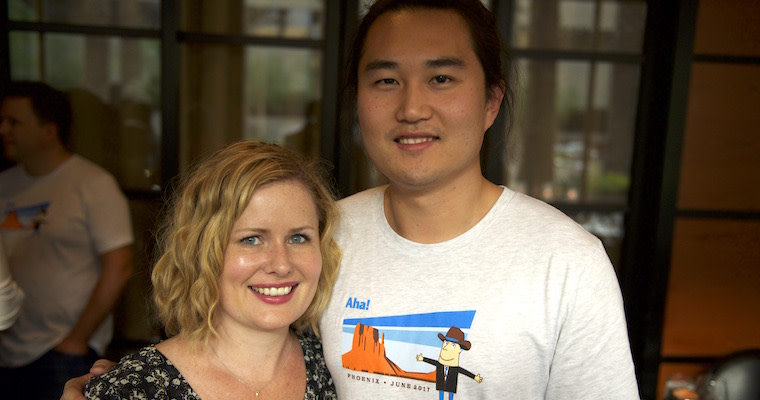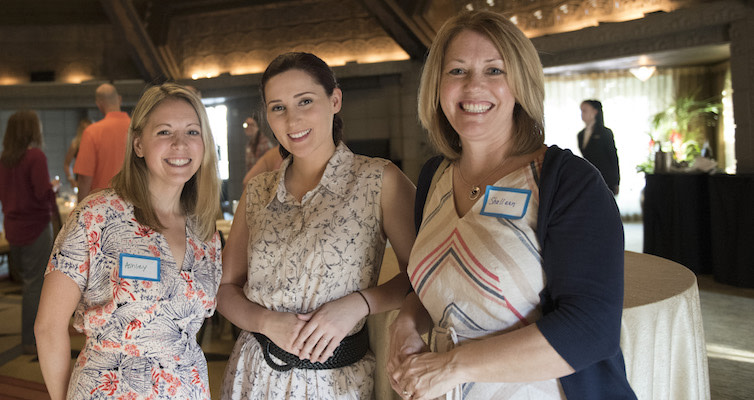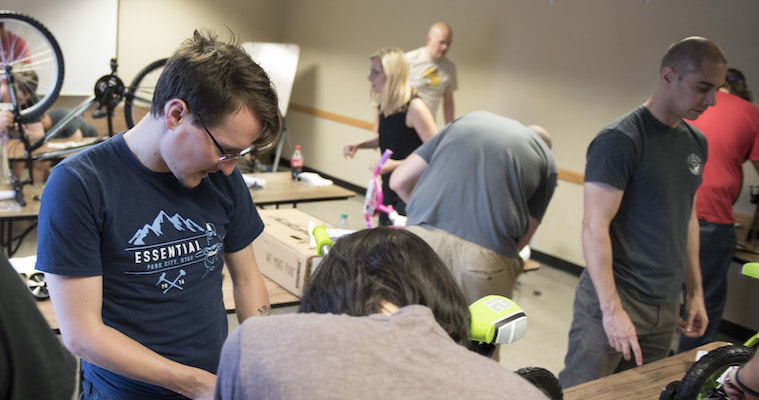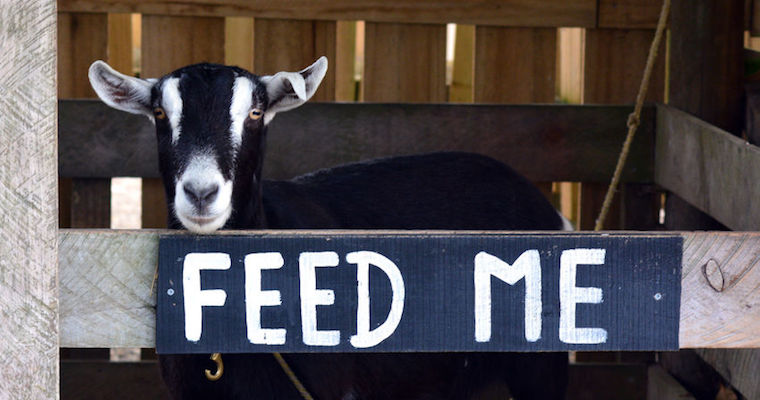
I Promise You Will Love This Company Offsite
Do the words “offsite quarterly business review” or “annual sales kickoff” make you want to run far, far away? You are not the only one. Sitting through endless presentations in stale conference rooms — ugh. But these kinds of large group meetings are especially important for remote teams.
Aha! is a fully distributed company, with teammates working across the United States and in a few international locations. Most of our day-to-day interactions are done over video or via a group messaging tool.
However, we do get the entire company together in person for our bi-annual company meetings. We call them “onsites.” (Get it? As a remote team, we are all “offsite” by default.)
Since these Aha! gatherings only happen twice a year, getting together feels more like a family reunion than a dreaded work obligation.
And our family is growing really quickly. With more than 50 people, these onsites are now major events. So we focus in on what matters most — the team. We spend a lot of time talking and getting to know each other better. We reflect on our past accomplishments. We present our plans for the upcoming six months. And we laugh together over some fantastic meals.
Being productive and having fun? Yes, it is possible. And it is something our remote team looks forward to twice a year. Here are a few of the ways we strive to make our onsites special:
1. Location and transportation
Location matters a lot. But the hotel matters as much as the city. That is why we avoid high rises, at least for now, and look for more intimate spaces. We choose resorts in destination locations with layouts that encourage mingling and with natural spots for hanging out. Recent onsite locations include Park City, Utah, and Newport Beach, California.
And of course, with a remote team, travel time is a major consideration. We always try to be within an hour of a major airport. As people book flights, you can create staggered transport groups from the airport to the hotel. The groups can use a car share or taxi service — it is a good way to meet new team members.

Our team loves outdoor adventure, so we try to select locations where we can explore.
2. Plan a rookie reception
This is the funny part about working with an entirely remote team — depending on when you joined, you may not meet your colleagues in person for months. Even though you “know” everyone from video meetings, it can be intimidating to walk into a big group. (Plus, you have no idea how tall people are!)
We instituted a “rookie reception” on the first night to ease new teammates into the event and let them know what to expect. The rookies are joined by company leaders for an hour-long gathering before the first team dinner of the week. No agenda — other than chatting and putting faces to names.

Name tags make it easy for new team members to start conversations at the “rookie reception.”
3. Breakfast and lunch
Take advantage of opportunities to help people build relationships before meetings begin. I was surprised to learn that much of our team would rather have breakfast together in a shared space than be on their own. It is not hard to make a run to the grocery store and grab a few items for informal breakfasts.
We also take a full hour lunch break for everyone to have a chance to relax and chat. Many hotels will encourage you to eat in an adjacent meeting room, but often those rooms are windowless! Ask if there is another space that is not being used — perhaps a restaurant that does not normally serve lunch — and see if you can dine in there. It will give you the feeling of truly stepping away.

Make the most of your time — keep the team together for casual lunches.
4. Make it personal
Be intentional about your time together. Set objectives for each dinner, for example. Maybe one dinner is about cross-company gratitude. Or give people three questions to stimulate conversation. Set aside one night for a “random” group dinner of no more than six people from cross-functional teams to encourage conversation and relationship building.
We also plan an activity that gives everyone an opportunity to stand up in front of the company and speak from the heart. We do this by reading a book beforehand and completing a short, written exercise — usually a personal reflection. It is transformational and important for team building to hear everyone’s responses.

Give everyone a chance to speak in front of the company — it builds trust and camaraderie.
5. Give back
It is possible for a fully distributed company to create community and connection within the group. But one thing that the distance does not offer remote team members is the chance to engage in volunteerism together. So we make that part of our onsite experience — either making a donation to a local group or engaging in a hands-on activity. The goal is to leave the community we are visiting a bit better off than when we got there.
Since you may not be familiar with the city you are visiting, you can either look for a national group like Together We Rise to help find a local agency to partner with, or you can start searching on your own. The United Way is also a good place to start because of all of the local agencies they support.

If you can, try a hands-on volunteer activity — such as donating and assembling bikes for children.
6. Photos and souvenirs
Take pictures! You do not get many chances to take group pictures of the team together, so invest in a good camera and encourage people to snap pics or hire a professional photographer. Hold a slideshow at your goodbye dinner — show the big moments and the quiet ones too. It is a way to immediately reflect upon your time together.
We also create a small gift that is specific to the event, such as a T-shirt or water bottle with the date and location. For fully distributed companies, a take-home souvenir is a nice reminder of the time shared and the connections formed. We also find that people are excited to share the souvenir with friends and family when they get back home.

A commemorative item, such as a shirt, is a nice way to remember the event.
When you are working with a remote team, it is essential that everyone works to build meaningful relationships. Spending dedicated time together really helps.
Of course, people are ready to go home to their families by the end of the week. But we are also re-energized. Everyone is excited about the company and the people we work with. And we take that team spirit home with us.
What else would you add to the list?


